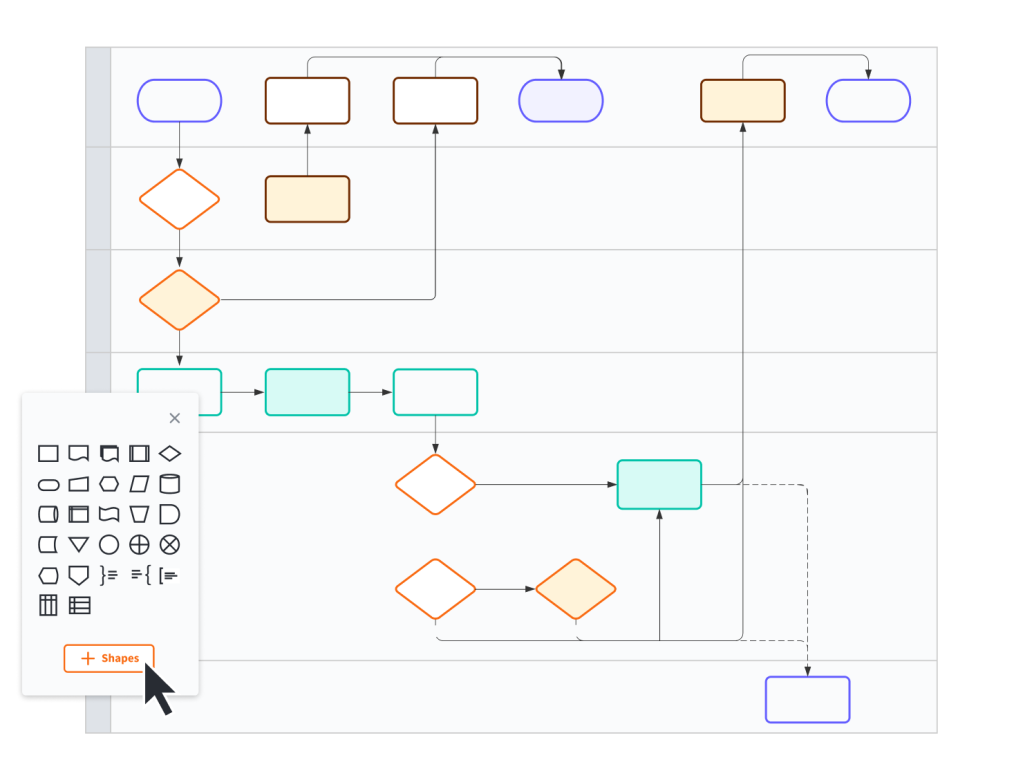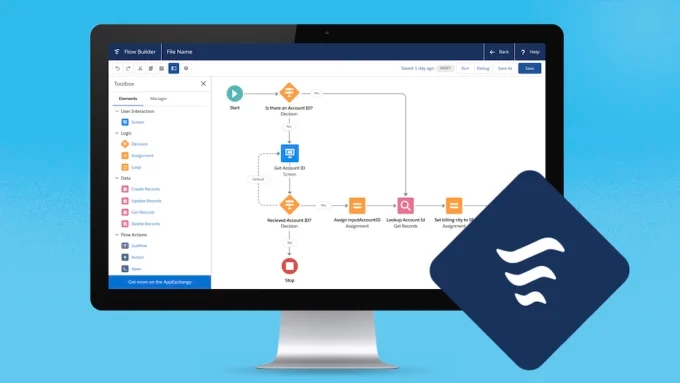Navigating a Health Cloud project in the Provider space can indeed feel intimidating, especially for Salesforce Professionals who are new to healthcare. But fear not! Here’s a snapshot of the most commonly used terminology, which will serve as your compass in understanding your client’s business processes. Consider these terms as your trusty guide, leading you through the maze of healthcare jargon. Embrace this learning opportunity with enthusiasm; every expert was once a beginner. With dedication and willingness to learn, you’ll soon navigate the project with confidence. You’ve got this!
Mastering healthcare industry terms is like having the key to decode the inner workings of healthcare. As we grasp each term, we piece together the puzzle of healthcare processes, forming a solid foundation of understanding.
Referral Management
A referral in healthcare involves the process of transferring a patient’s care from one provider to the another. This typically occurs when patients need evaluations or treatment beyond their scope of practice
Electronic Medical Record (EMR) or Electronic Health Record (EHR) – A digital version of a patient’s paper chart, containing their medical history, diagnoses, medications, treatment plans, immunization dates, allergies, radiology images, and laboratory test results.
Patient Demographics
Patient Demographics refer to specific characteristics and information about an individual patient. These details are collected and maintained by healthcare providers as well as organizations as a part of a patient’s medical record.
Common data elements that can be found in Patient Demographics are:
- Full Name
- Date of Birth
- Gender
- Address
- Contact Information
- Marital Status
- Ethnicity/Race
- Language Preferance
- Occupation
- Emergency Contact
- Insurance Information
- Health History
Insurance Verification
Insurance verification involves confirming a patient’s insurance coverage and determining the extent of their benefits. This process ensures that healthcare services are appropriately covered by the patient’s insurance plan. Accurately verifying insurance is essential for healthcare providers to ensure proper billing and reimbursement processes.
Some commonly used Insurance Verification terms are:
Member ID/Policy Number – unique identifier assigned to the insured individual or members covered under an insurance policy. It is used to access and verify coverage details.
Subscriber – the individual who holds the insurance policy and is responsible for the premium payments. They are typically the primary insured or the policholder.
Effective Dates – The date which the insurance coverage becomes active and benefits are available for use and the date when the insurance coverage becomes inactive and not available for use. They typically are represented as Effective From and Effective To Dates within Salesforce Member Plan Object.
Primary Insurance – The main insurance plan responsible for paying healthcare claims first before any other insurance coverage is applied.
Secondary Insurance – Additional insurance coverage that may be available to the patient to cover costs not paid by the primary insurance plan.
Claim Submission Requirements – Specific instructions and requirements for submitting claims to the insurance company, including preferred formats, codes, and documentation.
Coordination of Benefits (COB) – The process of determining how multiple insurance plans will pay claims when a patient is covered by more than one insurance policy.
Eligibility Verification – Confirming the patient’s eligibility for insurance coverage and benefits, including checking plan status and any coverage changes.
Coverage Benefits
Coverage benefits encompass specific healthcare services and treatments that are included in a patient’s insurance plan.
Deductible – The amount that an insured individual must pay out-of-pocket for covered services before the insurance company starts to pay. Verifying the deductible amount helps in determining patient responsibility for payment.
Co-payment (Co-pay) – A fixed amount that the insured individual is required to pay for certain covered services at the time of service. Verifying co-payment amounts ensures accurate collection of patient payments.
Co-insurance – The percentage of covered expenses that the insured individual is responsible for paying after meeting the deductible. Verifying co-insurance percentages helps estimate patient responsibility for services.
Out-of-Pocket Maximum/Limit – The maximum amount that an insured individual is required to pay for covered services during a policy period, beyond which the insurance company covers 100% of covered expenses. Verifying out-of-pocket maximums helps in assessing patient financial liability.
Pre-authorization/Prior Authorization – The process of obtaining approval from an insurance company before providing certain healthcare services or procedures. Verifying pre-authorization requirements helps ensure reimbursement for services rendered.
Network Status – Verifying whether the healthcare provider is in-network or out-of-network for the patient’s insurance plan. In-network providers typically have lower costs for insured individuals.
Appointment Scheduling
Appointment scheduling is the process of arranging visits between patients and healthcare providers at specific times and dates.
Here are some key terms:
Appointment Slot – A specific time interval during which a patient can schedule an appointment with a healthcare provider.
Availability – The time slots or periods during which a healthcare provider is available to see patients for appointments.
Appointment Type – The classification of appointments based on the purpose or nature of the visit, such as new patient appointments, follow-up visits, consultations, or procedures so on and so forth.
Appointment Status – The current state of an appointment, indicating whether it is scheduled, confirmed, canceled, rescheduled, or completed.
Provider Calendar – schedule that displays the availability of healthcare providers for appointments, allowing for easy visualization and management of appointments.
Encounters/Visits
Encounter Type – classification of encounters based on the nature or purpose of the interaction, such as office visit, telehealth consultation, surgery, diagnostic test, or therapy session.
Encounter Date – The date on which the encounter between the patient and healthcare provider occurred, used for documentation, billing, and tracking purposes.
Encounter Status – The current state or stage of the encounter, indicating whether it is in progress, completed, billed, or requires follow-up actions
Procedure Codes (CPT codes) – Current Procedural Terminology codes are used for billing purposes to communicate to insurance companies and payers the specific services rendered during patient encounters. Each CPT code corresponds to a particular medical procedure or service and may also include modifiers to provide additional information about the procedure performed. CPT codes are updated annually to reflect changes in medical practices and technology.
Diagnosis Codes (ICD-10 codes) – ICD-10 codes are alphanumeric codes used to classify and code diagnoses, symptoms, and reasons for encounters in healthcare settings. These codes are essential for medical billing and reimbursement processes, as they help insurance companies and payers understand the medical necessity and severity of patient conditions.
Assessments and Notes – assessments and notes are documented by healthcare providers to record their evaluation of the patient’s condition, findings from the examination, and plans for treatment or follow-up care.
Medication Management
Electronic Prescribing (e-prescribing): The electronic transmission of prescription information between healthcare providers and pharmacies, reducing errors, improving efficiency, and enhancing medication adherence.
Formulary: A list of medications covered by a specific health insurance plan, indicating which drugs are preferred and may have lower out-of-pocket costs for patients.
Medication History: A record of a patient’s past and current medications, including dosage, frequency, and duration, which helps healthcare providers make informed decisions when prescribing new medications.
Electronic Prior Authorization (ePA): The electronic process of obtaining approval from a patient’s insurance provider before prescribing certain medications, reducing administrative burden and delays in treatment.
Drug-Drug Interaction (DDI): An adverse reaction that occurs when two or more medications interact in a way that affects the effectiveness or safety of one or both drugs, potentially causing harm to the patient.
Drug-Allergy Interaction (DAI): An adverse reaction that occurs when a patient is allergic to a medication or its ingredients, which may cause allergic symptoms ranging from mild to life-threatening.
Medication Reconciliation: The process of comparing a patient’s current medication regimen with their medication history to identify discrepancies, such as omissions, duplications, or inaccuracies, and resolving any discrepancies to promote medication safety and adherence.
Claims
A claim in healthcare refers to a formal request for payment submitted by a healthcare provider or facility to an insurance company or payer for services rendered to a patient.
Claim Header
The claim header contains general information about the claim as a whole. It serves as the top section of the claim form and includes essential details that apply to the entire claim submission.
Common elements found in the claim header include:
- Patient Information: The patient’s name, date of birth, gender, address, and insurance information.
- Provider Information: The name, address, National Provider Identifier (NPI), and other identifying details of the healthcare provider or facility submitting the claim.
- Payer Information: The name and address of the insurance company or payer to which the claim is being submitted.
- Claim Identifier: A unique identifier assigned to the claim for tracking and reference purposes.
- Dates of Service: The dates on which the services or procedures documented in the claim were provided to the patient.
- Diagnosis Codes: The International Classification of Diseases, Tenth Revision (ICD-10) codes that represent the patient’s diagnoses or reasons for the encounter.
- Procedure Codes: The Current Procedural Terminology (CPT) codes or Healthcare Common Procedure Coding System (HCPCS) codes that describe the services or procedures performed during the encounter.
Claim Line Item
The claim line items contain detailed information about the individual services or procedures provided to the patient during the encounter. Each line item represents a specific healthcare service, procedure, or supply and includes relevant billing details.
Common elements found in claim line items include:
- Service Description: A description of the healthcare service or procedure performed, typically accompanied by a corresponding CPT code or HCPCS code.
- Quantity: The quantity or units of the service or procedure provided to the patient.
- Unit Price: The price or fee charged for each unit of the service or procedure.
- Total Charge: The total amount charged for the service or procedure, calculated by multiplying the quantity by the unit price.
- Diagnosis Pointer: A reference to the diagnosis code(s) from the claim header that support the medical necessity of the service or procedure.
- Modifiers: Additional information or indicators that provide context or specify circumstances related to the service or procedure, such as modifiers for anesthesia, bilateral procedures, or multiple procedures.
Claim Submission – The process of sending a claim to the insurance company or payer for reimbursement of healthcare services provided to a patient.
Patient Responsibility – The portion of the total charges for healthcare services that the patient is responsible for paying, including deductibles, co-payments, co-insurance, and any non-covered services.
Primary Payer – The insurance company or payer primarily responsible for processing and paying the claim based on the patient’s insurance coverage.
Secondary Payer – An additional insurance company or payer responsible for processing and paying any remaining balance of the claim after the primary payer has made payment.
Claim Status – The current state or stage of the claim in the reimbursement process, such as pending, processed, paid, denied, or rejected, tracked and managed within the Health Cloud platform.
Claim Denial – the refusal by the insurance company or payer to reimburse the healthcare provider for all or part of the claim, often due to reasons such as billing errors, lack of medical necessity, or coverage limitations.
Appeals Process – The procedure for challenging a claim denial or rejection by the insurance company or payer, typically involving the submission of additional documentation or justification for the services provided.




